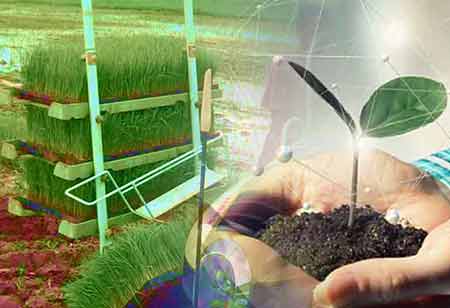Thank you for Subscribing to Agri Business Review Weekly Brief
Environmental Impact of Vertical Farming

By
Agri Business Review | Wednesday, June 29, 2022
Stay ahead of the industry with exclusive feature stories on the top companies, expert insights and the latest news delivered straight to your inbox. Subscribe today.
Vertical farming enables the more accurate application of technologies to promote improved efficiency and uniform quality in food production.
FREMONT, CA: Human civilization has been attributed to agriculture since the dawn of time. It was then as now that food sustainability hinged on scaling farming operations and technologies to cater to an ever-increasing demand. The global human population has never been more significant. It means feeding people through traditional farming alone has never been more challenging. Climate change makes crop forecasting and management more difficult, especially when drought, flooding, and catastrophic storms are expected to influence significantly.
In addition to resource management and environmental effects, unequal access to sufficient healthful food remains a significant issue. Growing indoors achieves various goals, including a regulated setting in which farmers are no longer at the whim of the weather, something that would have seemed impressive to the first farmers. Vertical farms use less water and fertilizer and do not require pesticides.
Better preserving of crops
Vertical farms can be single-story or multi-story structures with multiple levels of climate-controlled space used to cultivate various crops. Some food safety measures used in traditional farm settings might deplete the nutritional content of different types of vegetables. For example, washing leafy greens in a chlorine bath decreases their nutritional content. Vertical farms cultivate food indoors in climate-controlled conditions, so operations like chlorine baths are unnecessary, preserving more of the plant's nutrition.
Reduced manufacturing cost
Operating indoor vertical farms allows for the relocation of precisely controlled indoor climates to practically any planet. Vertical farming makes the best use of natural resources to enhance crop output, quality, and availability. It also helps to increase food equity. When healthier foods become less expensive to farm and supply chains reach traditionally underprivileged neighborhoods, healthy food options become more accessible and inexpensive. Shorter distances, fewer cleaning and preservation processes that degrade the nutritional value of foods, and ultimately reduced manufacturing and shipping costs make healthier foods more inexpensive.
Provides real-time data
Vertical farming maximizes yield, nutritional content, and availability of its food by employing sensors that continuously gather real-time data from every aspect of the vertical farm, from temperature, humidity, air quality, and airflow, to soil quality and water use. Finally, increasing efficiency, using fewer resources such as water, and growing food closer to consumers helps to lower production and supply chain costs and increase freshness, nutritional content, and access to healthy foods, all while decreasing environmental effect.





